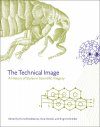By: Horst Bredekamp(Editor), Vera Dünkel(Editor), Birgit Schneider(Editor)
208 pages, 93 plates with colour illustrations; 92 b/w photos
![The Technical Image The Technical Image]()
Click to have a closer look
About this book
Customer reviews
Biography
Related titles
About this book
Originally published in German as Das Technische Bild: Kompendium zu einer Stilgeschichte Wissenschaftlicher Bilder (2008).
In science and technology, the images used to depict ideas, data, and reactions can be as striking and explosive as the concepts and processes they embody – both works of art and generative forces in their own right. Drawing on a close dialogue between the histories of art, science, and technology, The Technical Image explores these images not as mere illustrations or examples, but as productive agents and distinctive, multilayered elements of the process of generating knowledge. Using beautifully reproduced visuals, The Technical Image not only reveals how scientific images play a constructive role in shaping the findings and insights they illustrate, but also – however mechanical or detached from individual researchers' choices their appearances may be – how they come to embody the styles of a period, a mindset, a research collective, or a device.
Opening with a set of key questions about artistic representation in science, technology, and medicine, The Technical Image then investigates historical case studies focusing on specific images, such as James Watson's models of genes, drawings of Darwin's finches, and images of early modern musical automata. These case studies in turn are used to illustrate broad themes ranging from "Digital Images" to "Objectivity and Evidence" and to define and elaborate upon fundamental terms in the field. Taken as a whole, this collection will provide analytical tools for the interpretation and application of scientific and technological imagery.
Customer Reviews
Biography
Horst Bredekamp is professor of art history at the Humboldt University of Berlin and a permanent fellow of the Institute for Advanced Study in Berlin. Vera Dünkel is a scholarly assistant with the "Das Technische Bild" research project. Birgit Schneider is the Dilthey Fellow of the Fritz Thyssen Foundation at the Institute for Arts and Media, University of Potsdam.
By: Horst Bredekamp(Editor), Vera Dünkel(Editor), Birgit Schneider(Editor)
208 pages, 93 plates with colour illustrations; 92 b/w photos
"Not only is the objectivity of scientific images [...] challenged, but the accounts here of technical histories, evaluation practices, iconographical traditions, and modes of perception make even clearer the constructive character of the images. For all that such images are expected to be self-evident and to follow rules of repetition and verifiability, like experiments, it is nevertheless – or, even better, therefore – the case that manipulated images often generate better scientific results in the eyes of the scientists [...] The volume deserves to be treated as an indispensable research tool."
- Mirjam Brusius, University of Cambridge, British Journal for the History of Science
"The Technical Image concretizes the beginnings of a long-term intellectual project of outstanding importance: the interdisciplinary melding of methods from art history, media studies, and the history of science to produce a new body of scholarly literature on imagery generated in the contexts of 'pure' and 'applied' scientific research. The illustrations are excellent, the translations are very good indeed, and the glossary will be invaluable to undergraduate and graduate students alike as they begin to navigate the rich interdisciplinary literature now emerging on the interactions between the history of art and the history of science and technology. The pointed and even controversial texts in this volume will serve in the Anglophone academy as a point of departure for a renewed debate in numerous fields that is already well under way in the German-speaking context."
- John Harwood, Oberlin College, author of The Interface: IBM and the Transformation of Corporate Design
"By way of direct and empirical engagement with materials and forms that make up an image, general issues emerge that go into informing and shaping the study of technical images. Among the most important of these general issues is the notion of style. As an art-historical category, style thus reemerges in the context of technical images. This book does an excellent job of not only expanding the study of the image in the history and sociology of science more toward art history's veritable and long engagement with the image; but also conversely, it succeeds in explaining what art history takes to be an image. Visually exciting, interesting, and engaging."
- Omar W. Nasim, University of Kent, author of Observing by Hand: Sketching the Nebulae in the Nineteenth Century



































